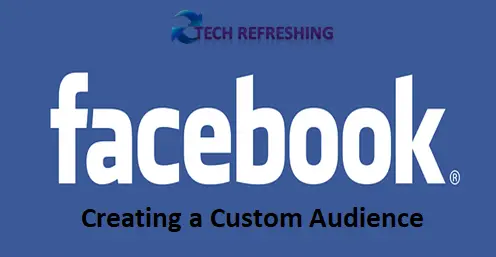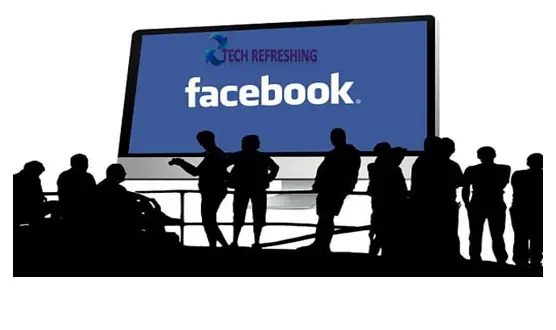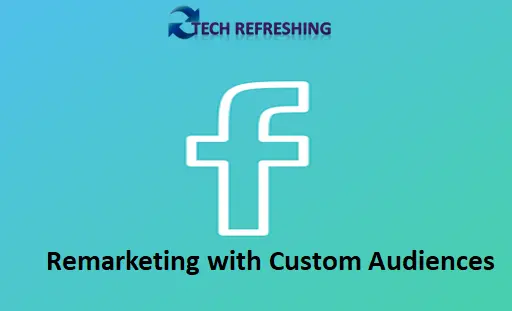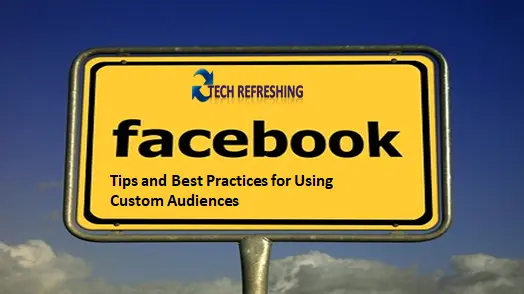Facebook’s custom audiences feature is a powerful tool for retargeting and remarketing to specific groups of people who have interacted with your business in some way. Whether you’re looking to increase sales, promote a new product or simply stay top-of-mind with your audience, this feature can help you achieve your goals.
In this blog post, we will go over the basics of how to use custom audiences for retargeting and remarketing and provide some tips and best practices for getting the most out of this feature.
Creating a Custom Audience

Making a custom audience is the first step in using them for retargeting and remarketing. Depending on the kind of audience you want to reach, there are a few different approaches you might use. Among the most popular choices are:
- Website traffic: With the “Website traffic” targeting option, you have the ability to reach individuals who have previously accessed your website. By giving you the opportunity to target users who have visited particular pages or portions of your website or who have been there for a specific amount of time, this tool enables you to choose an audience more precisely. This could be a useful tool for re-engaging previous visitors and enticing them to visit your website again.
- Email list: The “Email list” targeting option allows you to reach individuals who have opted-in to receive communication from your organization via email. By using this option, you can submit a list of email addresses to Facebook, and it will connect those addresses to the appropriate Facebook accounts. Businesses who want to interact with their current client base or those that want to reach a particular set of people who have expressed interest in their goods or services by signing up for their email list will find this option to be especially helpful. It can also be used to build a specific audience for remarketing campaigns to connect with prior customers.
- App activity: The “App activity” targeting option allows you to reach individuals who have interacted with your mobile application. This feature gives you the opportunity to target users who have carried out particular actions within your app, allowing you to choose an audience that is more precise. This can include users who have made a purchase, progressed through the app’s levels, or carried out any other particular tasks that you have established. Businesses who want to reconnect with their app users and persuade them to keep using the app and make more purchases may find this option to be a useful tool. You may improve conversion rates and maximise the return on investment of your ad campaign by selecting users who have already shown interest in your app.
- Offline activity: The “Offline activity” targeting option enables companies to connect with people who have previously interacted with them in the real world. Businesses can target customers who have visited their store, made a phone call or gave their contact information offline by uploading a list of phone numbers or mailing addresses to Facebook, which will match those to associated Facebook accounts. This can be an effective strategy for re-engaging with current clients or for contacting a particular demographic of people who have expressed interest in their goods or services by giving their contact information offline.
Once you’ve created your custom audience, you can start using it for retargeting and remarketing.
Retargeting with Custom Audiences

The practice of displaying advertisements to customers who have already engaged with your business in some way is known as retargeting. This is a fantastic approach to remind consumers about your business and nudge them in the direction of a purchase or other activity.
Showing ads to website visitors who have visited but not made a purchase is one of the most well-liked methods of retargeting using custom audiences. By using the website traffic option, you may make a bespoke audience of people who have already visited your website and then display advertisements for your goods or services to them. Those who have joined your email list but haven’t made a purchase can also be targeted using the email list option.
Showing ads to users of your mobile app who haven’t taken a particular action is a popular method of retargeting using custom audiences. You might, for instance, utilise the app activity option to establish a custom audience of users who have used your app but haven’t made a purchase and then display advertisements for your goods or services to this group of people.
Remarketing with Custom Audiences

Remarketing involves displaying advertisements to customers who have already made a purchase or completed another action. This is a fantastic approach to encourage customer loyalty and promote repeat business.
Displaying advertisements to people who have already completed a purchase is one of the most efficient ways to reengage customers through remarketing. A custom audience of customers can be created using the offline activity targeting option, and they can then be targeted with adverts for comparable goods or services.
Another popular way to remarket with custom audiences is to show ads to people who have completed a specific action within your mobile app. For example, you can use the app activity option to create a custom audience of people who have reached a certain level within your app, and then show them ads promoting new levels or in-app purchases.
Tips and Best Practices for Using Custom Audiences

Here are a few tips and best practices to keep in mind when using custom audiences for retargeting and remarketing:
- Test different targeting options: Experiment with different targeting options to see which one works best for your business. You may find that targeting people who have visited specific pages on your website is more effective than targeting all website visitors.
- Use lookalike audiences: Targeting lookalike audiences, which are groups of individuals who are similar to your current customers, can be an effective way to reach new potential customers who are likely to be interested in your products or services.
- Use dynamic ads: Utilizing dynamic ads, which automatically populate product or service information from your website or app, can be an effective way to create targeted and personalized advertisements that are more likely to resonate with your audience.
- Test different ad formats: Experiment with different ad formats, such as carousel ads, video ads, and canvas ads, to see which one works best for your business.
- Use event tracking: Use event tracking to keep tabs on particular actions users are taking on your website or app. Using this method, you can build specialised audiences that are more likely to convert.
Facebook’s custom audiences feature for retargeting and remarketing Steps:
To use Facebook’s custom audiences feature for retargeting and remarketing, you can follow these steps:
- Go to Facebook and log in with your user credential, then click on Ads Manager option and select the “Audiences” tab.
- Click on the “Create Audience” button and select “Custom Audience” from the dropdown menu.
- Select the type of data you want to use to create your audience. For example, you can use email addresses, phone numbers, or Facebook user IDs.
- Upload your data in the appropriate format. For example, if you’re using email addresses, upload a CSV file with one email address per line.
- Once your data has been uploaded, Facebook will match it against its own user data to create your custom audience.
- Create the Facebook Ad campaign targeting the custom audience you have created.
- Monitor the performance of the campaign and optimize it accordingly.
Please note that there are some restrictions on the data you can use to create custom audiences, so be sure to read Facebook’s policy on custom audiences before uploading your data.
Conclusion
Facebook’s custom audiences feature is a powerful tool for retargeting and remarketing to specific groups of people. By creating custom audiences based on website traffic, email lists, app activity, and offline activity, you can target people who have already interacted with your business in some way. Additionally, by using lookalike audiences and dynamic ads, you can reach new people who are likely to be interested in your products or services. By following these tips and best practices, you can get the most out of this feature and grow your business.

